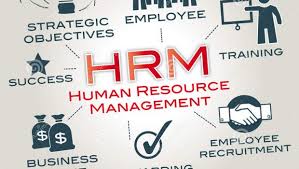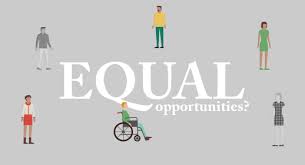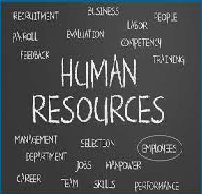
Human resource management of an Organization
Order Instructions:
For this paper, the writer will have to reference back to 113422 and use that as a starting point for this paper, and will also have to stay strictly on the templates provided as that is critical for this paper. This is a high level written and the writer must pay attention to all details. And closely follow all instructions indicated in the template. The prof has provided detail information in the template and the writer will have to write directly in the template as instructed. They are 6 parts to address this week and including the 10 pear review references and also not that THE CANNOT BE MORE THAN 5 YEARS OLD.
This assignment will prepare you for presenting your doctoral study proposal in week 8.
Be sure to use the mandatory Application Assignment Template Rubric” file for this assignment send to you by your prof. The template/rubric contains helpful notes which you will remove and insert your content. The scoring rubric is directly below the application content area. You will submit the entire document; application assignment and rubric.
Remember the topic we are working on is The Effects of Human Resource Management (HRM) Practices on Employee Performance
This final draft must include the following main elements (use template to ensure you are in compliance):
1. Background
2. Problem Statement
3. Purpose Statement
4. Central Research Question
5. Theoretical/Conceptual Framework
6. Significance of the Study
7. Minimum of 10 peer-reviewed references
Using the Application Assignment Template/Rubric giving to you by your Prof, write a draft of your own proposal.
It is strongly recommended you review your Application Rubric send to you prior to starting the assignment. Reviewing the rubric requirements will aid you in understanding the content and grading requirements for this assignment.
Note: You must have at least 10 peer-reviewed references listed in proper APA format.
Your paper and reference pages should be in accordance with APA 6th Edition guidelines.
I will send the templates Via Email to you guys, and as I said the writer must strictly follow the template for this paper.
SAMPLE ANSWER
Background
The performance of any organization primarily lies in its workforce. Many organizations that have turned out to be successful have realized that in as much as there are determinants that contribute to the success of an organization, the most important element remains the performance of the human resource (Akhtar, Azeem, & Mustafa, 2014). It is vital that the nature, size, and the activities an organization undertakes would not spur its growth if the involvement of the employees in these functions is not available.
Considering the nature of the modern market, several organizations have embarked on an approach geared towards improving the productivity of their employees through the advancement of the Human Resource Management practices. According to sources, the Human Resource Management (HRM) practices have the capacity to spur an organization towards achieving a competitive advantage since they significantly have a relationship with the employee’s performances (Loo-See, & Leap-Han, 2013). Effective (HRM) practices, therefore, improves the performance of an organization, a factor that leaders to its productivity and attainment of profits.
However, despite the reforms that has been made towards enhancing the (HRM) Practices geared towards advancing the productivity of employees, the desired level of employee performance has not yet been achieved, a factor that has posed challenges to organizations. In this current dispensation, it is critical to determining the fact that only those organizations that strive towards improving the performances of their employees can achieve success since this remains the only key to productivity (Akhtar et.al2014). It is essential to heed that the management of an organization employs training, compensations and employee involvement and participation, and performance appraisal in their (HRM) Practices.
The primary focus of this paper is in determining the impact of (HRM) Practices and how this is related to the performance of employees in undeveloped countries. To provide an in-depth analysis into this paper, I will test the impact of (HRM) Practices and its impact on employee’s performance in Nestle Pakistan Limited. It is also crucial to mention that the primary objective of carrying out this study is in discovering the best Human Resource Management Practices that can enhance the productivity of employees within this company. Through this, the paper will embark on finding the challenges that the organization faces in improving the productivity levels of its employees with the aim of providing a conceptual framework that can be used by the managers in employing such practices.
Problem Statement
It is critical to note that there are many reasons as to why managers do not achieve productivity in their organizations. The managers have always embarked on how they would improve the performances of their employees including the factors that make other employees more productive within their job areas than others (Ansari, 2011). In line with this, this research study seeks to determine the extent at which HRM promotion practices impact the perceived performances of employees.
Purpose Statement
This study seeks to analyze the declining performances of HRM practices in Nestle Company based in Pakistan. This study has been conducted to determine the manner in which HR practices impact the performance of employees in this company.
In order to give a clear picture of this, both the positive and the negative connections will be reviewed between the variables in the (HRM) practices and their impact on the performances of the employees working in Nestle Pakistan Limited. This study will, therefore, attract the attention of not only Nestles management but other private sector organizations with the aim of improving the practices.
The findings of this study will also assist Nestle in improving its productivity and efficiency through the development of appropriate (HRM) practices through an approach aimed at optimizing the abilities of its employees and developing strategies that motivate their productivity. Through this, the organization will be in a position to achieve its core objectives (Ameeq-ul-Ameeq, & Hanif, 2013). It is, therefore, essential to determine the fact that this requires a research methodology that is described herein. To achieve the research objectives of this paper, a descriptive research approach will be incorporated to give a typical description of some of the phenomenon in this study. The descriptive research approach will ensure that the existing situations are described rather than interpreted.
It is, therefore, essential to determine the significant variables that will be noticeable in this study will be in the areas of performance, evaluation and promotion, compensation (Ameeq-ul-Ameeq, & Hanif, 2013). In line with this, the targeted population remains the employees and their evaluation of how HRM practices impacts on their performances within an organization with particular reference to Nestle Company in Pakistan. The primary reason for the consideration of the three variables is based on the consideration of the fact that Nestle Pakistan Limited carries its functions in a developing region where the physiological needs dominate and impact the productivity of employees. The quantitative approach to research will, therefore, prove effective since it will give more results as compared to the qualitative method.
Given the nature of the research study, the population at stake will be the employees of Nestle Pakistan Limited. In as much as the numbers of female staffs may be dismal, the primary objective of the study will be in determining the performance levels as impacted by (HRM) practices (Ameeq-ul-Ameeq, & Hanif, 2013). It is therefore anticipated that the findings of this study will help the managers at Nestle foster the appropriate (HRM) practices that would influence the performances and productivity of the company’s employees. Additionally, these practices will also create an effective relationship between the company’s management and its employees.
Research Question
It is, therefore, essential to determine that the success of this study depends on identifying the challenges that Nestle has faced over time in using appropriate HR practices in improving the productivity of its employees. The study will determine how Nestle Pakistan Limited can improve its productivity through the efficient use of HR practices. Additionally, the study will also evaluate the manner in which HRM practices impact the productivity of the company’s employees.
Theoretical or Conceptual Framework
Based on this study, the conceptual framework as determined would, therefore determine approaches of how to improve the performances of their employees including the factors that make other employees more productive within their job areas than others. Prior to reviewing the different kinds of literature in this study, it is critical to determining that the (HRM) practices reflect the specific actions within an organization that is developed to achieve some specified outcomes (Ansari, 2011). It is therefore essential to establish the fact that this theoretical framework on the employee’s performance as perceived would be the dependent variable while on the other hand the HR practices such as performance evaluation, compensation, and promotion practices remain the independent variables as depicted below. Figure 1.
Having determined this, it is crucial to understanding that this research study is typically based on the resource-based view. The foundations of the RBV within an organization dates back from the works of Penrose in 1959 who perceived that an organization’s collection of productive resources both in the physical and human forms, as well as material have the capacity to spur the productivity of a company (Ansari, 2011). In other words, the view holds that a firm can gain its competitive advantage through the use of its internal resources.
It is, therefore, imperative to mention that the resource-based view is grounded on four essential assumptions in any organization. To begin with, the resources within an organization need to add positive value especially in the HR context, a factor that Nestle has struggled with for a time (Ansari, 2011). In this event, the company may use its resources in ensuring that better HR practices such as training are incorporated into its functions to boost its productivity.
Secondly, the RBV also holds that a company’s resources should be unique especially in the concepts of the HR (Bhatt, 2012). In as much as every employee has unique skills and knowledge, within the setting of Pakistan where Nestle operates, the organizational structure assumes that the employees are not equally important in achieving success in a company. It may, therefore, be easy to hire a production manager in Pakistan than in any other region.
Thirdly, it is also significant to mention that the resources of an organization should be imperfectly imitable. For instance, a company may develop an HR module through a specialized technology. However, this innovative approach may not apply to other organizations dealing with the same line of products. This, therefore, determines the fact that different business environments have the capacity to dictate an organization’s performance.
Lastly, according to the RBV, resources need not be substituted for other resources for other competing organizations. This, therefore, provides a challenge for several organizations that compete within the same line of products (Bhatt, 2012). An instance of this can be depicted when an experienced manager from Nestle is hired by another company to enter into the local business. This will, therefore, be an opportunity for the HR department to develop new resources to be the market leaders from time to time at a lower cost. Linking this theory to the organizational practices at Nestle, it is imperative to determine that the company can apply variable HR practices through an approach that considers its unique resources and environment to impact the performances of its employees.
Significance of the Study
Contribution to Business Practice
In line with this, the study will help Nestle Pakistan Limited in aligning its HR practices with the performance of its employees and determining some of the areas they have failed to comply with efficiently. The result of this is therefore anticipated to improve the efficiency and performance of the company’s employees (Bhatt, 2012). This will, therefore, help the organization in optimizing its employee’s abilities through an approach that seeks to use the resources within the company to develop viable HR practices.
Implications for Social Change
This study is therefore significant since it seeks to determine the positive and negative relations created between the (HRM) practices and the productivity of employees within Nestlé Company with the aim of developing a framework that can provide direction to the company’s managers on approaches to achieving their aspirations (Channar, Talreja, & Bai, 2015). Through this approach, a positive relationship that will spur the change of behaviors in employees will be initiated, a factor that will boost their productivity.
The results of this research inquiry will therefore be useful especially in creating awareness to HR personnel on the factors and the keys to gaining a competitive edge in the market (Shahzad, Iqbal, & Gulzar, 2013). It is, therefore, imperative to determine that the results of this study will initiate change in Nestles employees through a process that will require the company’s managers to develop efficient HR practices.
Research Findings
It is, therefore, essential to determine the fact that the HR practices of an organization remain significantly vital in determining the behavior and insolence of a company’s employees. This, therefore, brings the point that (HRM) is an approach that practically makes use of people through an approach that seeks to maintain the relations within the organization (Channar, et.al). It is this wake that most of the developing countries such as Pakistan are considering the efficiency of HR as an essential element in the success of an organization.
According to Cohen et al, some of the problems that the (HRM) in developing countries encounter include the dwindling performance values, low leveled salaries, limited incentives to inspire excellent performances, the lack of the ability of firing unproductive personnel, promotion guidelines that are merely based on particular genders and seniority rather than the performance levels of employees, the lack of motivational tasks as a result of deficient managements, the lack of compensations against hard work, and employment measure that do not please the skilled personnel (Channar, et.al). As a result of this, many industries and companies that carry out their business operations in the developing countries such as Nestle Limited face unintentional barriers as a result of unproductive and outdated human resource practices and systems.
As a result of these factors, many research studies have therefore embarked on studies aimed at determining numerous HR practices that can significantly impact the performances of employees within specified environments (Channar, et.al). Most of the studies have therefore revealed the fact that a cluster of HR practices may significantly influence the performances of employees especially those functioning in segregation. In short, an efficient initiation of these particular practices may initiate high performances within an organization depending on its resources and context.
The research therefore determined the fact that performance is a comprehensive observable element within an organization, a factor that led to the determination of eight HR practices that may impact the performance of employees (Channar, et.al). These factors include; selection practices, rewards, promotions, staffing and assortment approaches, guidance, the performance of employees, complaint procedures, and social security or allowances as factors that would spur the productivity of workers within an organization. Considering the nature of development in Pakistan, it is therefore essential to determine the fact that the impact of HR practices has a direct impact on the performance of an organization through the outcomes of employees, in this case-Nestle Limited.
Employees are motivated to productivity in the event that they are financially rewarded, a factor that hastens their performances and productivity. According to Saleem, (2014), companies are more likely to get an increase in their returns when they embrace the element of equity that in ignoring the long-term incentive plans. Remuneration according to this author can influence the behaviors of employees within an organization. In this, it is essential to determine the fact that compensatory practices have a positive relation with the perceived performance of Nestle Pakistan Limited employees.
Additionally, it is critical to establish the fact that the manner in which the performances of a company’s employees are evaluated is an important element in determining the need for training, an approach that would spur the productivity of organizations employees. Performance assessment and compensation, therefore, plays a significant role in enhancing the efficiency of a company’s employees (Khattak, Rehman, & Rehman, 2014). Research has therefore determined the fact that performance evaluation is a process that should be mandatory since it gives an organization the opportunity to identify, evaluate, rate and depict the work attitudes and quality of its employees. Performance evaluation, therefore, has positive relations with the performance of Nestle Pakistan employees.
Lastly, it is essential to establish that promotion is also a significant element that impacts the performance of organizations employees. Promotion goes with remuneration that elevates the earnings and grade of an excellent employee (Khattak, et.al). This, therefore, gives the illusion that there is a positive association that is tied to the promotional practices and employee performance. Nestle, therefore, needs to advance its promotional practices since these element has a positive impact on the performance of its employees.
Conclusion
The findings in this inquiry have therefore proved the fact that some of the challenges that Nestle Pakistan faced were about the development of viable HR practices that would impact the performance and productivity of its employees (Tiwari, 2011). Considering this fact, it is, therefore, essential organizations to realize that the performance of any organization primarily lies in its workforce.
References
Akhtar, N., Azeem, S. M., & Mustafa Mir, G. (2014). Impact of Human Resource Management (HRM) Practices on Perceived Organizational Performance. International Journal of Academic Research, 6(5), 23-30. https://www.doi:10.7813/2075-4124.2014/6-5/B.3
Ameeq-ul-Ameeq, & Hanif, F. (2013). Impact of Training on Employee’s Development and Performance in Hotel Industry of Lahore, Pakistan. Journal Of Business Studies Quarterly, 4, 68-82.
Ansari, N. G. (2011). Employee Perception of Human Resource Management (HRM) Practices: Impact on Commitment to the Organization. South Asian Journal of Management, 18, 122-149.
Bhatt, P. (2012). Understanding HR and Development Paradigms: Changes and Effectiveness, an Employees’ Standpoint. Organization Development Journal, 30, 75-89.
Channar, Z. A., Talreja, S., & Bai, M. (2015). Impact of Human Capital Variables on the Effectiveness of the Organizations. Pakistan Journal of Commerce & Social Sciences, 9, 228-240.
Khattak, A. N., Rehman, S., & Rehman, C. A. (2014). Organizational Success through Corporate Trainings: A Case Study of Hotel Industry of Pakistan. Journal Of Business Studies Quarterly, 6, 167-183.
Loo-See, B., & Leap-Han, L. (2013). Human Resource Management Best Practices and Firm Performance: A Universalistic Perspective Approach. Serbian Journal of Management, 8, 155-167.
Saleem, I. (2014). Strategic Management Research: The Missing Linchpin In Developing Economy’s Context. IBA Business Review, 9, 97-105.
Shahzad, F., Iqbal, Z., & Gulzar, M. (2013). Impact of Organizational Culture on Employees Job Performance: An Empirical Study of Software Houses in Pakistan. Journal of Business Studies Quarterly, 5, 56-64.
Tiwari, P. (2011). Impact of Selected Human Resource Management (HRM) Practices on Perceived Employee Performance: An Empirical Study. Global Management Journal, 3, 37-43.
We can write this or a similar paper for you! Simply fill the order form!












